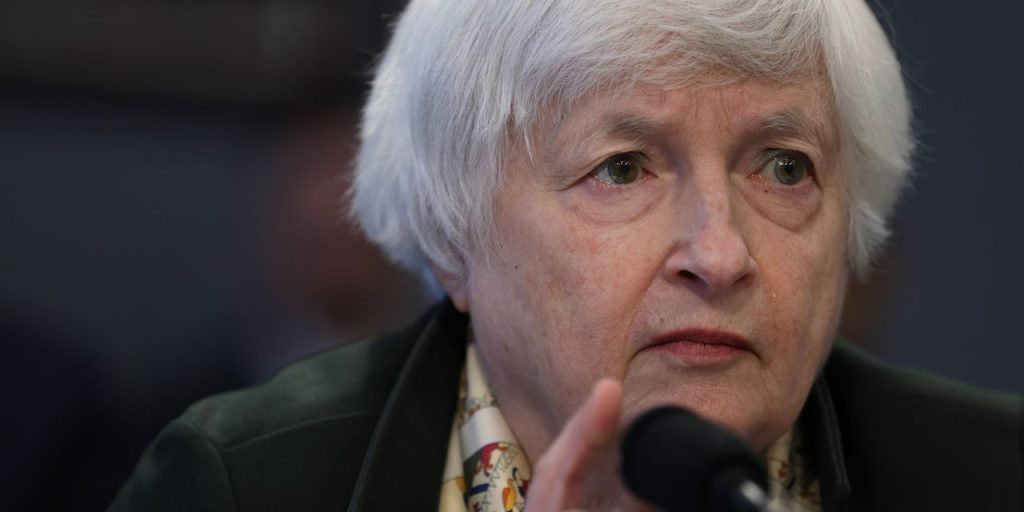Banks and insurance companies still have time to come to grips with their commercial real-estate exposure, but the clock is ticking on the debt-ceiling standoff, said Rich Sega, global chief investment strategist at Conning.
“We are still in the early days on that,” Sega said of potential stress from a weakening commercial real-estate market. “We don’t see any immediate problems.”
A bigger concern, however, is the clock ticking down on the U.S. debt-ceiling deadline, which could put credit spreads in jeopardy the closer negotiations get to an “X-date” without a resolution.
Treasury Secretary Janet Yellen recently said her department’s best X-date estimate, or when the government could be unable to continue to satisfy all its obligations, is early June, and potentially as soon as June 1.
As MarketWatch’s Andrew Keshner wrote this week, a failure to increase the current $31.3 trillion U.S. borrowing limit risks sparking a selloff in financial markets and hurting people’s 401(k) holdings and more.
Riskier corporate bonds also could take a beating, pressuring credit spreads wider, while sweeping up higher-quality assets in the process, Sega said.
Like Conning, an insurance asset manager with $191 billion in assets under management, insurance companies have a large exposure to high-quality corporate bonds, in addition to real estate and other risk assets.
Insurance companies were the second-largest holders of debt in the $14.9 trillion U.S. corporate bond market with a roughly $3.2 trillion exposure, according to CreditSights. Foreign accounts were the biggest group at $3.7 trillion.
“We believe it will get resolved, but how it gets resolved likely makes a big difference to credit spreads, and to the credit rating of the U.S.,” Sega said.
Yields in the U.S. corporate bond market have increased as the Federal Reserve has dramatically raised its policy interest rate to a 5%-5.25% range from nearly zero about a year ago. Credit spreads, however, have been roughly steady in the past year at around 1.5% above the risk-free Treasury rate for U.S. investment-grade corporate bonds.
Growing debt pressures
In the early part of the COVID crisis in 2020, investment-grade corporate bond credit spreads blew out to 4%. The Fed responded to that credit freeze by rolling out a series of emergency facilities to shore up confidence in markets, including a program for the central bank to buy corporate debt for the first time in history.
Easing of credit conditions then led to a historic borrowing binge by corporations, households and the U.S. government and interest rate shocks in the past year left banks and other asset managers sitting on unrealized losses on low-coupon pandemic bonds, which have become worth less as newer debt issued at higher yields has cut their value.
Sega said higher rates still pose risks for commercial real estate, particularly if banks can’t finance their exposure, but he also views the sector as having “time to cure” some of its woes, with long-term leases in place and staggered debt maturities over the next few years.
U.S. stocks were lower Thursday on revived concerns about regional banks, including PacWest Bancorp
PACW,
disclosing a 9.5% decline in deposits in recent weeks.
If the Fed doesn’t soon end its rate hiking cycle, Sega says it may risk triggering a recession that isn’t short and shallow, which could drag down suburban real estate along with office buildings in city centers. Traders of federal funds futures on Thursday were expecting a 50% chance of a rate cut as soon as July.
“I don’t think commercial real estate is uniformly terrible,” Sega said. “In many markets there is still good demand for real estate.”
Read: Fed’s Kashkari watching interplay between inflation, interest-rates and banks
The Dow Jones Industrial Average
DJIA,
was off about 220 points, or 0.7%, while the S&P 500 index
SPX,
was 0.2% lower, according to FactSet.
Read the full article here
